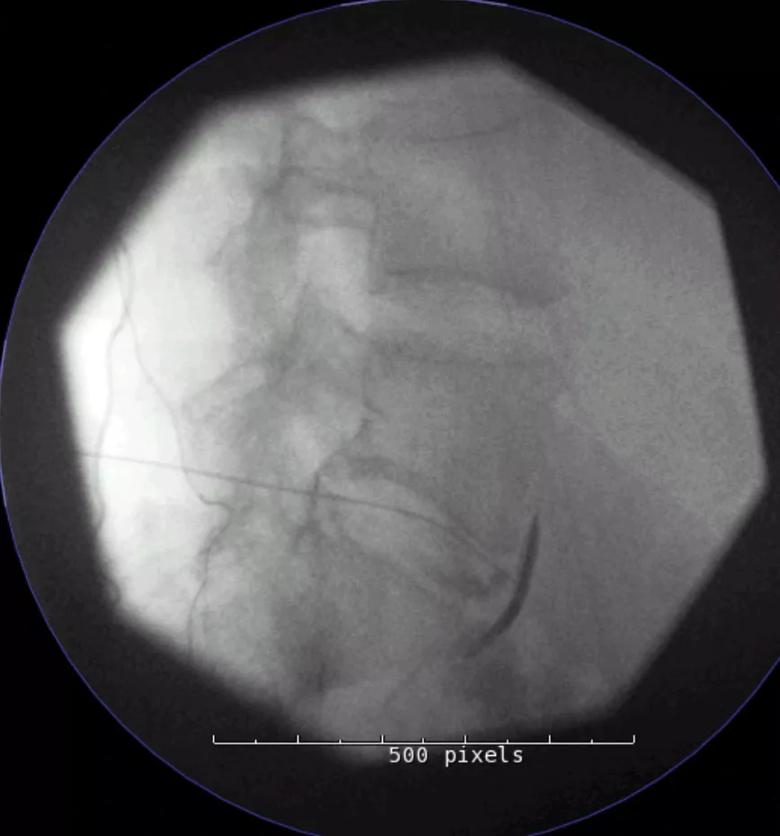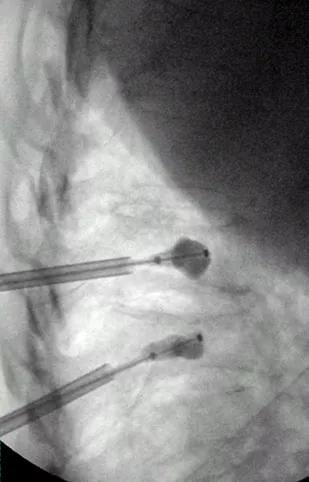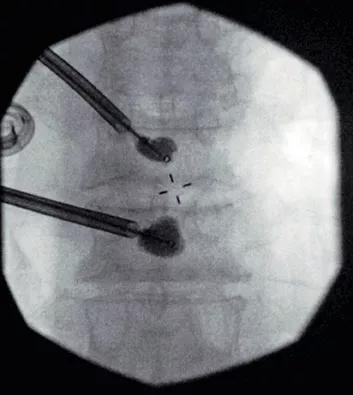Other pain management treatments can supplement

When one of Dr. Harold Goforth’s rectal cancer patients failed to respond to chemotherapy and oral pain medication over six months, palliative surgery was offered. Unfortunately, the patient was inoperable. With no other options, Dr. Goforth, a member of Cleveland Clinic’s Department of Hematology and Medical Oncology, referred the patient to pain management specialist Sherif Costandi, MD, who administered neurolytic hypogastric and ganglion impar blocks that yielded significant pain improvement.
Cleveland Clinic is a non-profit academic medical center. Advertising on our site helps support our mission. We do not endorse non-Cleveland Clinic products or services. Policy
“Most patients with cancer pain can be managed medically,” says Dr. Goforth. “But for those with incomplete symptom relief, there’s a large role for advanced pain techniques.” That’s when he calls on colleagues like Dr. Costandi, of Cleveland Clinic’s Department of Pain Management.
Cleveland Clinic adheres to the World Health Organization’s three-step ladder for cancer pain management, which depends on the level of pain. As a tertiary care center, Cleveland Clinic treats many cancer patients with complex pain conditions. “Opioids are usually the initial line of therapy used and are indeed an effective modality for many patients,” says Dr. Costandi.
Dr. Goforth says the majority of cancer patients can be managed medically with a combination of opioids and nonopioids. However, opioids are notorious for side effects such as excessive drowsiness, nausea, vomiting, constipation and hormonal disturbances. “We offer other interventions that aim for pain relief with improved quality of life during the patient’s life expectancy,” explains Dr. Costandi.
Because cancer is a complex, progressive disease, treating cancer pain is challenging. Interventional pain management modalities play an important role, notes Dr. Costandi. He classifies them in three main categories, all of which can be used in tandem with opioids:
1) Nerve blocks. These can be divided into three broad types according to their purpose:
Patients who obtain short-term but substantial relief with prognostic blocks can benefit from therapeutic blocks such as a neurolytic block. Neurolytic celiac and superior hypogastric blocks (Figure 1) are an established treatment option for upper abdominal and pelvic malignancies, respectively.

A neurolytic hypogastric plexus block for advanced colon cancer.
2) Vertebral interventions. These include vertebral augmentation procedures (VAPs) and the OsteoCool® RF Ablation System.
VAPs are complex procedures to treat and relieve pain from compression fractures due to spinal metastasis, which is common in multiple myeloma and other cancers. Two kinds of VAPs are performed by highly trained interventional pain specialists or neurosurgeons:


Images showing T7 and T8 kyphoplasty in a patient with multiple myeloma.
“VAP patients show significant improvement in pain almost immediately,” says Dr. Costandi. “Multiple studies have demonstrated noticeable pain reduction as well as improvement in function.”
OsteoCool is a technique that uses bipolar water-cooled radiofrequency ablation to treat spinal pain secondary to metastatic vertebral tumors. Clinical experience at Cleveland Clinic, which was among the first centers to investigate this technique, shows local disease control, marked pain reduction and quality-of-life improvements from a single treatment.
3) Implantable therapies. These modalities include implanted neurostimulators, used for selected cancer patients presenting with intractable focal neuropathic pain, and intrathecal drug delivery devices. The latter are considered for patients who fail to respond to oral opioids and may benefit from an alternate medication or who experience pain relief from opioids but are limited by severe side effects. Intrathecal pump implants optimize pain relief for patients with a life expectancy of more than three months. For patients with shorter life expectancy, a subcutaneous port with a tunneled catheter is usually placed instead.
Physicians from oncology, pain management and palliative medicine work together at Cleveland Clinic to determine the best interventions for each patient. “It’s extremely important to collaborate,” says Dr. Costandi, “because each specialist brings a unique skill set and knowledge base to the patient’s care.”
“Pain control and cancer-related symptom management by palliative medicine and pain specialists is paramount in achieving clinical success,” adds Dr. Goforth. “Oncologists can actually spend more time on oncology.”
“If cancer pain is refractory to conventional pharmacotherapy or if patients cannot tolerate escalating doses, physicians should definitely consider other interventions,” Dr. Costandi notes. “The goal is to improve patients’ functionality and help them enjoy the remainder of their lives. That’s the least we can offer, and they deserve it.”

Palliative and Supportive Care Teams offer comprehensive care to improve the lives of patients facing cancer

Newer medications pivotal for improving gastrointestinal symptoms in patients with cancer

Helping patients with cancer struggling with depression, anxiety and other mental health issues

Majority of 1,000 patients seen in 2022 discharged home

Identifying the underlying cause key to successful treatment

Patient resources promote healthy living, management of late and long-term side effects

Research and clinical experience indicate that hyperthermia boosts the efficacy of radiotherapy

Reducing uncollectible revenue, financial burden